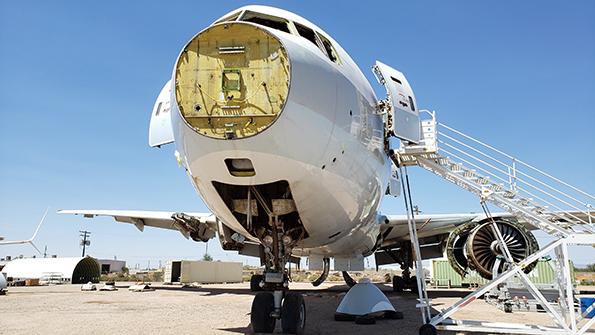
Statistics have become a big part of our daily lives and affect what we do. The number of people who are infected with COVID-19 in particular geographies affects where we can (or should) go.
From a business perspective, we eagerly watch passenger-traffic figures, the percentage of fleets that are flying and flight hours to monitor the commercial aviation industry’s recovery.
This numbers game can feel like a roller coaster, except the downward part is more scary than hands-up-in the-air thrilling.
For instance, recently Alexandre de Juniac, director general and CEO of the International Air Transport Association (IATA), said: “August’s disastrous traffic performance puts a cap on the industry’s worst-ever summer season. International demand recovery is virtually nonexistent, and domestic markets in Australia and Japan actually regressed in the face of new outbreaks and travel restrictions. A few months ago, we thought that a full-year fall in demand of -63% compared to 2019 was as bad as it could get. With the dismal peak summer travel period behind us, we have revised our expectations downward to -66%.”
There is nothing pollyannish about this statement from the airline association. However, this is for total traffic—and we know that domestic markets are recovering faster than international passenger traffic.
While the MRO market is hardly flourishing, some momentum is starting to build. For instance:
· Cargo ton-kilometers were down 12.6% in August year-over-year due to capacity constraints caused by parked passenger aircraft, but IATA says daily widebody freighter utilization is about 11 hr. per day, the highest since that figure has been tracked. For MROs servicing widebody freighters, this is a bit of good news.
· Airlines are making decisions about their future fleets. Australia’s Regional Express Holdings (Rex) will lease six Boeing 737-800s to begin U.S. East Coast routes in March. Alaska Airlines is accelerating the retirement of 10 Airbus A320s, as it appears to be seriously considering moving to an all-Boeing fleet. Avianca resumed flying in September after a five-month stop and is focusing on Airbus A320s for domestic and Boeing 787s for international flights. Delta Air Lines is launching the Airbus A220-300 in November and will retire its 717s, 767-300s and Bombardier CRJ-200s by 2025.
· Carriers such as Air Seychelles, Qatar and United Airlines are resuming some international routes.
· The ebb and flow of parked aircraft is starting to change. Ascent Aviation Services is seeing almost an equal number of aircraft returning to service as are coming in to be parked. It also is beginning to see increased demand for teardowns. AerSale purchased 24 757-200s and their Rolls-Royce RB211-535 engines for conversion to cargo aircraft as well as for teardown for spares.
· On the engine side, MTU is seeing a change to newer configurations of engines, such as the V2500 Select, and a “stronger connection of asset management and smart MRO to reduce cost for owners, as well as change from a long-term strategy to a short-term tactical investment behavior,” says Andrea Luebke, managing director.
Watching the fluctuating daily and monthly numbers really is short-term tactical behavior, and that is necessary right now.





